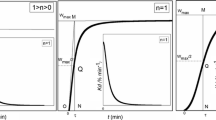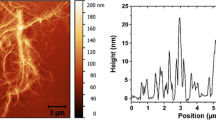Abstract
Density functional theory and molecular dynamic simulations were used to understand the microscopic-level interactions of pectin-based thin films with moisture (H2O), carbon dioxide (CO2), and oxygen (O2). Galacturonic acid (GA), which forms ~65% of the smooth region of pectin polymer, was chosen for the current study. The electrostatic potential and Fukui function maps indicate that oxygen atoms of –OH groups of GA are the most reactive sites for electrophilic attack and hydrogen atoms on the carboxylic group (–COOH) are the reactive sites for nucleophilic attack. The GA molecule has shown strong interaction via hydrogen bonding with H2O (E= ~ 40 kJ/mol) followed by CO2 (E = ~ −13 kJ/mol). Nucleophilic O2 showed insignificant interaction with GA. Surface interaction, adsorption, and diffusion of sorbate molecules on the GA film followed the order of H2O >CO2 > O2. Molecular interaction studies provided atomistic insights into the weak moisture and high gas barrier properties of pectin films.








Similar content being viewed by others
Data availability
The raw/processed data required to reproduce these findings cannot be shared at this time as the data also forms part of an ongoing study.
Code availability
Not applicable
References
Dhall RK (2013) Advances in edible coatings for fresh fruits and vegetables: a review, critical reviews in food science and nutrition. Crit Rev Food Sci Nutr 53:435–450
Ciolacu, L., Nicolau, A. I., & Hoorfar, J. (2014) Global safety of fresh produce. A handbook of best practice, innovative commercial solutions and case studies. Woodhead Publishing Limited: Sawston, UK.
Elisabetta R, Doyoon K, Yunteng C, Silvia F, Luigi DN, Benedetto M (2020) A multilayered edible coating to extend produce shelf life. ACS Sustain Chem Eng 8(38):14312–14321
Otoni CG, Avena-Bustillos RJ, Azeredo HMC, Lorevice MV, Moura MR, Mattoso LHC, McHugh TH (2017) Recent advances on edible films based on fruits and vegetables—a review. Compr Rev Food Sci Food Saf 16:1151–1169
Embuscado, M. E., & Huber, K. C. (2009). Edible films and coatings for food applications, Springer Science.
Falguera V, Quintero JP, Jiménez A, Muñoz JA, Ibarz A (2011) Edible films and coatings: structures, active functions and trends in their use. Trends Food Sci Technol 22:292–303
Lin D, Zhao Y (2007) Innovations in the development and application of edible coatings for fresh and minimally processed fruits and vegetables. Compr Rev Food Sci Food Saf 6:60–75
Montero Garcia, M. P., Gomez-Guillen, M. C., Lopez-Caballero, M. E., & Barbosa-Canovas-E. V. (2017). Edible films and coatings: fundamentals and applications, CRC Press.
Sina, E. (2013). Handbook of biopolymers and biodegradable plastics properties, processing, and applications, Elsevier Inc.
Vaishali, Sharma HP, Samsher, Chaudhary V, Sunil, Kumar M (2019) Importance of edible coating on fruits and vegetables: a review. J Pharm Phytochem 8(3):4104–4110
Cerqueira MAPR, Pereira RNC, Ramos PLS, Teixeira JAC, Vicente AA (2016) Edible food packaging: materials and processing technologies. CRC Press, Taylor Francis
Batori, V., Jabbari, M., Akesson, D., Lennartsson, P. R., Taherzadeh, M. J., & Zamani, A. (2017). Production of pectin-cellulose biofilms: a New approach for citrus waste recycling. Int J Polymer Sci, Article ID 9732329.
Grassino AN, Halambek J, Djakovic S, RimacBrncic S, Dent M, Grabaric Z (2016) Utilization of tomato peel waste from canning factory as a potential source for pectin production and application as tin corrosion inhibitor. Food Hydrocolloids 52:265–274
Abhishaben MS, Chandegara VK, Jithender B, Pankajkumar MS (2019) Whey protein isolate based biodegradable food packaging film as affected by protein to glycerol ratio, pH and sonication amplitude. Int J Curr Microbiol App Sci 8(3):895–909
Claudia LE, Elizabeth CM, Rene BQ, Yolanda LF, Agustin RC (2018) Pectin and pectin-based composite materials: beyond food texture. Molecules 23:942
Valdes A, Burgos N, Jimenez A, Garrigos MC (2015) Natural pectin polysaccharides as edible coatings. Coatings 5:865–886
Sartori T, Feltrea G, Sobral PJA, Cunhaa RL, Menegallia FC (2018) Properties of films produced from blends of pectin and gluten. Food Packag Shelf Life 18:221–229
Chakravarthula SSN, Michela S, Nadia L, Federica B, Marco DR, Valentina S (2019) Characterization of composite edible films based on pectin/alginate/whey protein concentrate. Materials 12:2454–2473
Phuong Ngo TM, Nguyen TH, Dang TMQ, Tran TX, Rachtanapun P (2020) Characteristics and antimicrobial properties of active edible films based on pectin and nanochitosan. Int J Mole Sci 21:2224–2240
Younis HGR, Abdellatif HRS, Ye F, Zhao G (2020) Tuning the physicochemical properties of apple pectin films by incorporating chitosan/pectin fiber. Int J Biol Macromol 159:213–221
Priyadarshi R, Kim SM, Jong-Whan R (2021) Pectin/pullulan blend films for food packaging: effect of blending ratio. Food Chem 347:129022. https://doi.org/10.1016/j.foodchem.2021.129022
Mellinas C, Ramos M, Jimenez A, Garrigos MC (2020) Recent trends in the use of pectin from agro-waste residues as a natural-based biopolymer for food packaging applications. Materials 13:673–690
Mohnen D (2008) Pectin structure and biosynthesis. Curr Opin Plant Biol 11(3):266–277
Vassilis K (2020) Pectin: technological and physiological properties. Springer
Frank N (2018) Software update: ORCA program system version:4. WIREs Computational Molecular Science 8:e1327
Hanwell MD, Curtis DE, Lonie DC, Vandermeersch T, Zurek E, Hutchison GR (2012) Avogadro: an advanced semantic chemical editor, visualization and analysis platform. J Cheminform 4:17
Roothaan CCJ (1951) New developments in molecular orbital theory. Rev Mod Phys 23(2):69–89
Curtiss LA, McGrath MP, Blaudeau J-P, Davis NE, Binning RC Jr, Radom L (1995) Extension of Gaussian-2 theory to molecules containing third-row atoms Ga-Kr. J Chem Phys 103:6104–6113
Becke AD (1993) Density- functional thermo chemistry. III. the role of exact exchange. J Chem Phys 98:5648–5652
Lee C, Yang W, Parr RG (1988) Development of the Colle-Salvetti correlation-energy formula into a functional of the electron density. Phys Rev B 37:785–789
Boys F, Bernardi F (1970) The calculation of small molecular interactions by the differences of separate total energies. Some procedures with reduced errors. Mol Phys 19:553–566
Sistla YS, Khanna A (2021) Molecular understanding of carbon dioxide interactions with ionic liquids. J Mole Liquids 325:115612
BIOVIA, Dassault Systèmes, Material Studio 2020, San Diego: Dassault Systèmes, 2020
Martin W, Andrew JAH, Ananya S, Caroline EHD (2013) Performance of M06, M06–2X, and M06-HF density functionals for conformationally flexible anionic clusters: M06 functionals perform better than B3LYP for a model system with dispersion and ionic hydrogen-bonding interactions. J Phys Chem A 117:12590–12600
Zhao Y, Truhlar DG (2008) The M06 suite of density functionals for main group thermochemistry, thermochemical kinetics, noncovalent interactions, excited states, and transition elements. Theoret Chem Acc 120:215–241
Delley B (2006) Ground-state enthalpies: evaluation of electronic structure approaches with emphasis on the density functional method. J Phys Chem A 110(50):13632–13639
Hisao T (1990) Molecular dynamics simulations of diffusion of small molecules in polymers: effect of chain length. J Chem Phys 93:4490
Frenkel D, Smit B (2002) Understanding molecular simulation: from algorithms to applications, 2nd edn. San Diego, Academic Press
Hongguang S, Jun Y, Lei Z (2015) Molecular simulation of shale gas adsorption and diffusion in clay nanopores. Computation 3:687–700
Benco L, Tunega D, Hafner J, Lischka H (2001) Upper limit of the O−H···O hydrogen bond Ab initio study of the kaolinite structure. J Phys Chem B 105(44):10812–10817
Mendez F, Gazquez JL (1994) Chemical reactivity of enolate ions: the local hard and soft acids and bases principle viewpoint. J Am Chem Soc 116(20):9298–9301
Faver J, Kenneth MM Jr (2010) The utility of the HSAB principle via the Fukui function in biological systems. J Chem Theory Comput 6(2):548–559
Anderson LR, Yang Q, Ediger AM (2018) Comparing gas transport in three polymers via molecular dynamics simulation. Phys Chem Chem Phys 20:22123–22133
Gupta R, Kartha TR, Mallik BS (2019) Solvation structure and dynamics of alkali metal halides in an ionic liquid from classical molecular dynamics simulations. ACS Omega 4:19556–19564
Kirkpatrick S, Gelatt CD, Vecchi MP (1983) Optimization by simulated annealing. Science 220:671–680
Grassman TJ, Knowles MK, Marcus AK (2000) Structure and dynamics of fluorescently labeled complex fluids by Fourier imaging correlation spectroscopy. Phys Rev E 62(6):8245–8257
Philippe BA (2006) Dynamic structure and cluster formation in confined nanofluids under the action of an external force field. Physical Review E 74:041407
Acknowledgements
The authors acknowledge Shiv Nadar University and SNU-Dassault Systems Centre of Excellence (SDC), India, for providing the Biovia Material Studio software and also the computational resources.
Author information
Authors and Affiliations
Contributions
Shumyla Mehraj is a PhD student under Dr. Yamini Sudha Sistla. The submitted work and article are a combined effort from both the authors.
Corresponding author
Ethics declarations
Conflicts of interest
The authors declare that they have no known competing financial interests or personal relationships that could have appeared to influence the work reported in this paper.
Additional information
Publisher's note
Springer Nature remains neutral with regard to jurisdictional claims in published maps and institutional affiliations.
Supplementary Information
Below is the link to the electronic supplementary material.
Rights and permissions
About this article
Cite this article
Sistla, Y.S., Mehraj, S. Molecular Simulations to Understand the Moisture, Carbon Dioxide, and Oxygen Barrier Properties of Pectin Films. J Mol Model 28, 83 (2022). https://doi.org/10.1007/s00894-022-05069-z
Received:
Accepted:
Published:
DOI: https://doi.org/10.1007/s00894-022-05069-z




